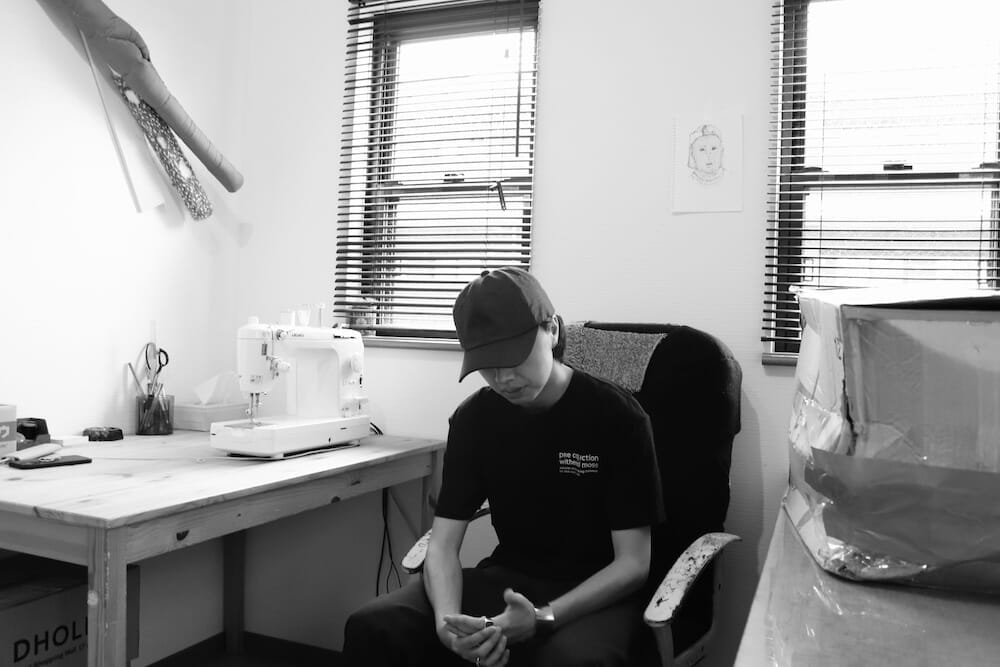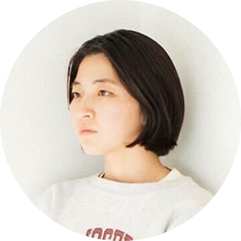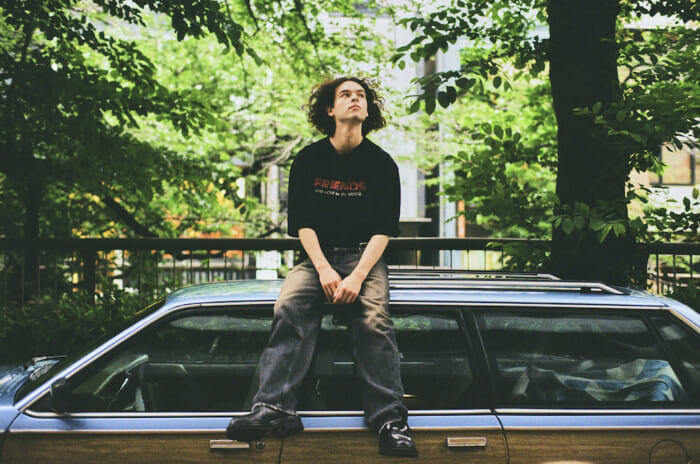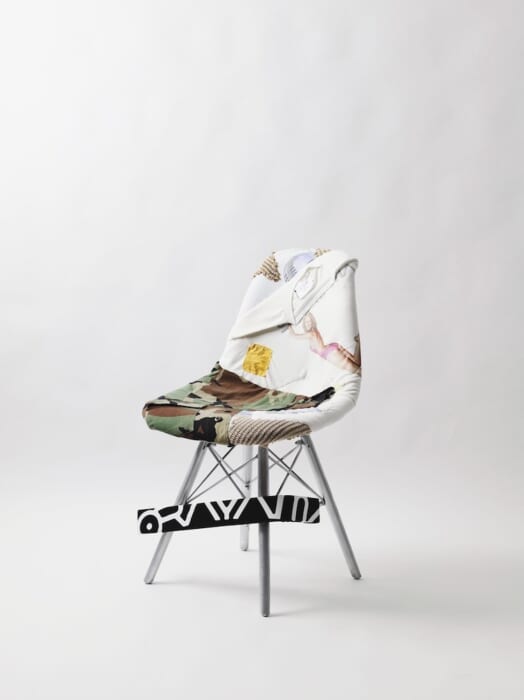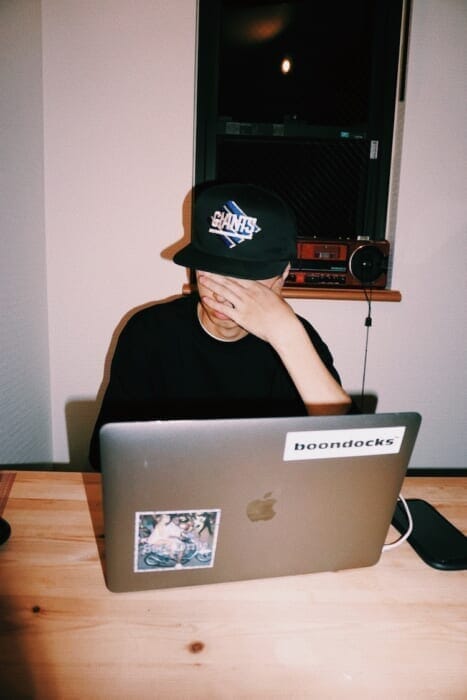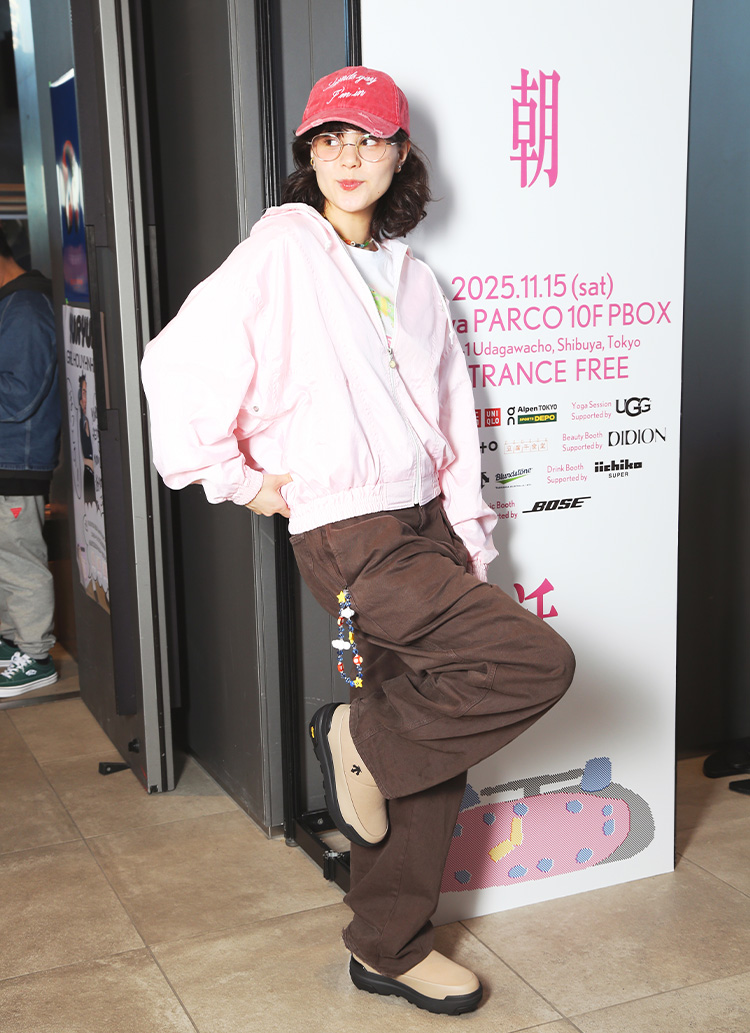The answer is both , and neither .
KOTA KAWAI is an artist who creates works by taking old clothes made of different materials, shapes, and colors, and putting them together to form the framework of a chair. Although his activities began only last year, he has been noticed by numerous apparel brands and creators, and his momentum is now unimpeded.
Once in HOUYHNHNM, "Shopping AddictIn the "The Chair that Pushes the Possibilities of Clothing" project, I introduced the chair as "a chair that pushes the possibilities of clothing. Later, however, I realized from interviews in other media that behind the work was not only a positive idea, but also a concern for social issues.
What lies at the root of his creativity and what has shaped him . To get a closer look, we visited him in a room of his parents' house, which is his workshop, to hear his story.
PROFILE
Born in Osaka , 1998. Studied clothing at Bunka Fashion College and received the Dean's Award of Bunka Fashion College while in school . After experiencing vintage CUSTOM at an archive and select store for about 2 years from 2018 while still in school, she started her artist activities in November 2020. In addition to producing works for solo exhibitions, he also actively collaborates with apparel brands.
Instagram: @_kotakawai
. I'm a chair because I'm surrounded by clothes.
You started working on this project in November last year, when you were still a student at Bunka Fashion College.
KOTA KAWAI (KAWAI): As the name suggests, I studied production management of clothing in the "Production System Course. I chose this course because there were not many assignments, I could take my time as I wanted, and I also wanted to focus on activities outside of school.
Many people around you make clothes, don't they?
KAWAI: Yes. So when I make chairs, people say, "Why not clothes? They say, "Why don't you make chairs? I think I wanted to do something different from the people around me. I think I wanted to do something different from the people around me.
Before I started making chairs, I was making about 60 to 80 remake clothes a month until October of my senior year . The following month, I switched to chairs.
From his Instagram (May 20, 2021)
. Did you simply like chairs?
KAWAI: Yes, that's right. I have always liked chairs that make people sit, but I wanted to make them from existing materials rather than preparing new materials.
Since you started your activities last year, you have already had several exhibitions, and recently you have been working with apparel brands such as "DYLIK" and "FACETASM. Did you expect this to happen?
KAWAI: I can't say that I had 100% in mind, but when I looked at what I was doing and the trends of the times, I didn't think it was a bad idea at all, and with the help of those around me, I have made it this far.
Create with "resources that are already available.
Please tell us about the process of making a monopod.
KAWAI: Rather than days per leg, we make decisions over a long span of time. The final goal is to have an exhibition or pop-up, and we decide on a concept before that, and then start production. Sometimes, I try to make a product and then adjust it to the concept.
. Where do you come up with the concept? What is the source of your ideas?
KAWAI: I guess it's like expanding on what I feel in my daily life.
. I guess you mean from what you see and hear, right? What is your source of input?
KAWAI: There is a Netflix film called "Our Earth," which is a collection of raw footage of nature and animals, such as a whale coming out of the ocean in a flash,The Making of Itis often watched.
On YouTube, there is a channel where Morita does DIY.Gotanda GarageAnd the rest was recommended to me by a friend of mine recently,Stylist Lambda Takahashi's channel. also see.
In terms of artists, I would say Olafur Eliasson. I happened to see him featured on Netflix's "Art of Design," and from there I began to look into his work.
The keywords are "environment" and "DIY," which are not too far away from your work.
(Left) An illustration drawn by Kawai. The motif is not anyone, but a fictitious person. As for the vertical lines drawn on the face, he said, "It is not a social distance, but I may have drawn it as a kind of mask to distance myself from the outside world. (R) In order to organize the concept of the exhibition, he wrote it down in a notebook.
Two of Mr. Kawai's favorite books. (top) "TTP," a collection of photographer Hayahisa Tomiyasu's work, is a collection of photographs taken at a ping-pong table in a park. (bottom) "How I Felt," a collection of Berlin-based fashion designer Christine Birkle's works, studio, and costume designs.
. Let's go back to the work. Which of the two materials, the chair or the fabric, do you start with?
KAWAI: Based on the chair of materials, we choose fabrics according to the image of the chair. . I ask a friend to drive me to a warehouse in Chiba for fabrics. I choose fabrics quickly, relying on my senses, and stock the ones I have bought.
He said he would clothe the chairs with the clothes he had collected.
KAWAI: I make a little something, put it on my desk, look at it from a distance, and repeat. When I get stuck, I go to bed for the time being. I reset and look at it again when I wake up. I try to look at things objectively. I do not work all night long, and basically go to sleep. Production is a part of my daily life.
From his Instagram post (April 7, 2021)
As you mentioned earlier, did you feel differently about having FACETASM provide the fabrics for your work than you normally would?
KAWAI: That was Isetan's booking. I first told the brand which chair I would use, and in response, the designer Mr. Ochiai sent me the fabric.
Did not being able to choose the fabrics yourself make the production process more difficult?
KAWAI: I don't think so. My concept is to create with "available resources," so not being able to choose my own resources was not an obstacle, and the process was no different from my usual production.
. My personal impression is that the chairs produced through this collaboration are more solidly made than in the past.
KAWAI: This time, the materials were textiles, not clothes, so the method was different from docking clothes. The material was a thin rayon or cotton-like material, and I was concerned about its durability if I had used the conventional method. I think the way I sewed the thin fabric made it look that way.
The absence of clothing gimmicks such as zippers and pockets may have made it look more like a ready-made chair. . It was a new challenge for us because we were able to communicate with the outside world.
What about trying to solve clothes with clothes?
. I would like to explore the truth of the statement that "clothes have reached the chair," which triggered this interview, but before that. In an interview with another media outlet, you said, "Clothes are just fiber.
KAWAI: In the context of the SDGs and other current trends, I think there is a strong momentum to do something about it even with clothing. I wonder what it would be like to try to solve the problem of clothing by using clothing. I feel that ideas are becoming narrower and narrower, and if we can consume them in a different way, I think we can soften this problem.
. When you say "using clothes to solve clothing problems," you are referring to the development of eco-friendly fabrics and remaking efforts, right?
KAWAI: Yes, of course there are trends, but not everyone is thinking about the environment all the time, and I am not shouting about the environment all the time either. That's the reality. I am not trying to digest such efforts, but to "sublimate" them. It would be nice if we could put them into a different phase.
I see, clothes have been sublimated into chairs that transcend the boundaries of genres. That phrase means that you sounded the alarm about the recent sustainability issues, and at the same time, you solved the problem in a brilliant way.
KAWAI: My activities will increase opportunities for people to learn about the problems facing the apparel industry today, and I think they are contributing to society in some small way.
I have a nasty question, but what direction do you think your creative activities would take if, hypothetically, this problem were to be solved and there were not enough clothes to go around?
KAWAI: To begin with, I did not set out with the intention of continuing to work in this way of expression. In the beginning, my basic idea was to make chairs using various things, so I used not clothes but carriers and speakers for shopping.
From his Instagram post (August 18, 2019)
I just like the idea of making things from "natural resources." My activities do not originate from a sustainable spirit, but rather from an exploration of art. It is just a theme to give form to values and ideas. . If the problem is solved and gone, the meaning of my work will have been fulfilled, and I will rethink the direction of my work in my own way.
. I also simply want to challenge myself more. If I made chairs all the time, I think people would think that I was going to make chairs again. But I want to do something different from what other people expect.
You mentioned at the beginning that you wanted to do something different from what was predicted, and you are always thinking about how your work will be seen by others.
KAWAI: There was a video on YouTube of a man being beaten up, and it was interesting at first, but then I realized that I had stopped watching it. Every time there is a slight change, but in the end the project itself is the same, in other words, it is predictable, and I think that's why I stopped watching it.
In the case of music, I find it interesting to see the strength and weakness of the A-melody, B-melody, and chorus throughout a song, and in the case of a movie, I find it interesting to see unexpected situations and climaxes. I think the reason why I keep changing my expression by creating other things while focusing on chairs is because I want to arouse people's curiosity as to what I will do next.
A work made for the most recent exhibition. Clothes are wrapped around scrap wood and sewn into it, and it functions as an object to be hung on the wall.
You have also made a work (see above) that is not a chair, but a series of sticks connected together.
KAWAI: This is a work that I exhibited at my solo exhibition at "noma" in Shibuya until recently. The concept is "downstream. I thought that the flow of garbage from upstream to downstream is linked to the flow of clothing from production to disposal in the apparel industry. The items that flow downstream are always different, made of various kinds of materials, and it is interesting to see how the mismatched items are combined together, rather than becoming something cohesive in the end.
. It was a coincidence that something that was not supposed to meet met each other, or something like that.
KAWAI: Apart from creating an object like a chair, I wanted to create something more abstract and snooty, something that would make the viewer think. If you ask me what it is, I can only say that it is like an object, but the fact that it can be hung on a wall is also a key point.
What do you mean?
KAWAI: Without taking out the time when you are sitting on it, the chairs we have made so far usually make you look down when you look at them as an object. So, thinking of the current pandemic situation, I wanted to create something that would allow people to look forward and up a bit more. That's why I made an object to hang on the wall.
, cleared when the work intervenes in our lives.
I would like to know what happens to your works after they leave your hands. Do you ever check the reactions of customers or people who bought your works?
KAWAI: I rarely do that. . But I think about my approach to the audience from the perspective of what I would think if I went to my own exhibition. I made a video to advertise my first solo exhibition, but that was inspired by Olafur. When a friend of mine showed me an image advertising his exhibit, I wasn't attracted to it, but then I saw the Netflix video and regretted that I should have gone. . That is to say, I was moved by the video. . so I did that with the promotion of my own exhibition.
From his Instagram post (October 13, 2020)
What was it about the video that moved you so much?
KAWAI: It seems like I look at images, but I don't really look at them. We instantly assume that this is how it is supposed to look. Video is more realistic and can be taken as a pseudo-experience.
I have a lot of opportunities to be objective in every step of the process, both production and advertising.
KAWAI: I have a certain level of confidence because I am making what I want to make. So, I guess I am also concerned about the perspective of what others might think of my work.
Kawai's work (chairs) placed in the workroom and at the entrance. You can sit on them, look at them, or use them as a place to put things. They have a unique character, yet fit in with real life.
Do you have any ideas about how you want the people who buy your chairs to use them?
KAWAI: There is nothing special about that. The fact that this work intervenes in people's lives has already fulfilled the significance of the work, and the resources are being recycled. So I would like people to use it in any way they want.
. As collaboration increases, the significance of your work is likely to be more widely recognized. Do you want to continue to collaborate with other companies in the future?
KAWAI: Actually, off the record, I have some plans for this year, and I am thinking of curtailing my individual production a bit. By changing the direction of your work, the value of the chairs you have made so far will increase, won't it?
_____________
After the interview, as we were taking pictures of the workroom, I suddenly asked, "Do you imagine what you will be doing 5 or 10 years from now?" He replied, "Even if I don't make any money now, if I think I can do it next year, I try to do it. As long as I am doing this kind of work, I have to be more successful than anyone else by the time I retire," said Kawai.
Admiring his objective view of even life, I was glad to hear what he had to say before the creator, Kodai Kawai, went out of reach. He will be 23 years old this year.


